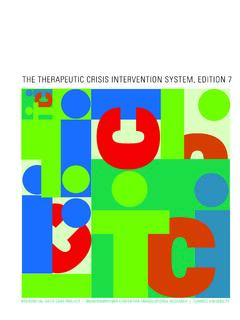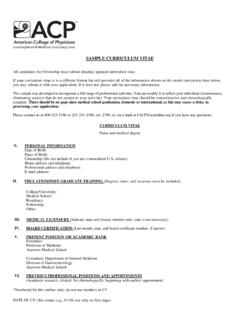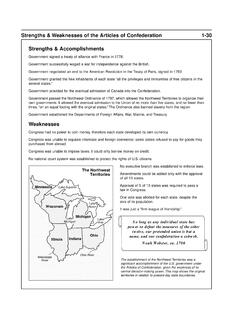Transcription of Salary Caps in Professional Team Sports
1 3 Compensation and Working Conditions Spring 1998 The use of Salary caps , limitinghow much teams can paytheir players, is a relatively newdevelopment. Basketball was the firstsport to cap salaries, in the 1984-85season, and a similar restriction wentinto effect in football in 1994. In othersports, Salary caps were contested inboth the 1994-95 baseball strike andthe 1994-95 lockout in hockey. Inthese Sports , unions have been able tofend off acceptance of a general cap,although luxury taxes were put intoeffect on baseball team payrolls ex-ceeding specified amounts, and hockeynow has a Salary cap for relations models in the foursports have certain 1967, when the initial teamsports collective bargaining agreementwas reached in basketball, owners andplayers have experimented with waysof sharing power and dividing rev-enues. Today, all Sports have a formof free agency, allowing players to selltheir services to other clubs after a cer-tain period of time has elapsed.
2 Sal-ary caps have emerged as a quid proquo to free agency. That is, while play-ers are allowed to sell their services tothe highest bidder, the Salary cap re-stricts how much can be paid to play-ers on a team as a whole, thus pre-venting labor costs from rising beyondthe stated article examines the natureand operation of Salary caps in bas-ketball and football, and the contro-versies and arrangements over the is-sue in baseball and hockey. Becausesalary caps can be viewed as a coun-terpart to free agency, there is particu-lar interest in how these two featuresinteract. Salary caps are also viewedin the broader context of owners ver-sus players, and their effects on col-lective the other Sports , basketballwent through its dark ages for playersalaries during the years of owner ap-plication of the reserve clause. Play-ers are drafted by national BasketballAssociation (NBA) teams that have anexclusive right to sign the player theyselect.
3 Once a drafted player signs acontract he becomes the exclusiveproperty of the club. The initial useof the reserve clause was to bind aplayer to a particular club for life, un-less the player was sold, traded, or puton waivers. With a right to continueduse of the players services, clubs hadmonopsony control they were theonly buyer in the market and hadlittle incentive to pay high players made several legalchallenges to the reserve clause, it wasnot until the mid-1970s that the courtsSalary caps and payroll taxes may seem beneficial to owners, butare their effects more symbolic and cosmetic than fundamental?Labor relations models in basketball, football, baseball, andhockey have certain PA UL D. STAUDOHARS alary caps inProfessional team SportsPaul D. Staudohar is a professor of businessadministration, California State University,Hayward, CA. A version of this article was pre-sented at a conference on Player Market Regu-lation in Professional team Sports in Neuchatel,Switzerland.
4 The author s views are his own anddo not necessarily reflect those of the Bureau ofLabor Statistics or the Department of Compensation and Working Conditions Spring 1998partially lifted the In1976, a new collective bargainingagreement was reached between theNBA and the national BasketballPlayers Association (NBPA) thateliminated the reserve clause optionfrom nonrookie contracts. However,there were some restrictions on freeagency set forth under the was the establishment of a rightof first refusal system (beginning in1980), whereby a team about to lose afree agent could match the offer madeby another club, and thus retain theplayer. Another was an arrangementfor compensating teams that lost freeagents. As determined by the com-missioner of basketball, teams couldbe awarded players, draft choices, orcash upon losing a free succeeding collective bargainingagreements free agency continued tobecome more liberal.
5 The compensa-tion rule was jettisoned in 1980, andthe right of first refusal, which re-placed the compensation rule, wasmodified in favor of the players. How-ever, in part due to the difficulty ofadjusting to the higher compensationlevels for players that free agencywrought, many clubs were not doingwell financially. They wanted reliefthrough a Salary Bettman (Commissioner ofthe national Hockey league ) devisedthe idea of a Salary cap in the the early 1980s Bettman was thenumber three man in the NBA, behindthen Commissioner Lawrence O Brienand current Commissioner DavidStern. In July 1982, O Brien and Sternsat down with Lawrence Fleisher,counsel for the NBPA, and its presi-dent Bob Lanier, to work out what isconsidered one of the pioneering col-lective bargaining agreements in all Negotiations were difficult,particularly because of the proposal tomoderate salaries.
6 There was even talkof a strike. Although the 1982-83 sea-son opened without an agreement, theplayers made it clear that the deadlinefor reaching the agreement was April1, shortly before the playoffs wouldbegin. The owners would have beenespecially vulnerable to a strike at thattime, because a sizable share of theirrevenues comes from post-season talks gained momentum whenthe owners offered to share league rev-enues with the players, as an offset tothe Salary cap. The revenue sharingproposal was initially set at 40 per-cent, then raised in negotiations to 50percent, and finally to 53 percent bythe owners, who agreed to guaranteethis percentage of gross revenues tothe players. This overcame the finalbarrier in negotiations, and the agree-ment was reached on March 31, 1983,establishing the first Salary cap Salary cap began with the1984-85 season and was initially setat $ million. Because five teamswere already paying more than $ , their payrolls were the cap was scheduled to riseto $ million in 1985-86, it actuallyrose to $4,233,000.
7 The reason theactual figure was higher is that thescheduled figure was only a minimumcap, while the actual figure representsthe maximum cap of 53 percent of rev-enues. The amount of the Salary capover the years is shown in table and impact. A distinction canbe made between a hard Salary cap anda soft Salary cap. Basketball s cap wasand remains a soft cap. The reason isthat there are loopholes that have de-veloped in the operation of the systemthat make it possible for teams to ex-ceed the cap. In a hard Salary cap,exceptions would not be allowed andteams could not spend more than the 1983 agreement, teamswere allowed to retain at any price oneplayer who became a free agent, andthat player s Salary would not countagainst the cap. Thus, a team couldre-sign its own free agent player re-gardless of the impact that the sign-ing would otherwise have had on thecap. If a hard cap had existed, all sala-ries would count toward the cap, irre-Table 1.
8 Basketball average salaries, percentage changes, Salary caps , and ratios, 1984-85 through $340,000-$3, , , , , , , , , , , ,034, , ,202, , ,348, , ,558, , ,800, , ,027, , ,189, , ,000 Average salarypercentage changeSalary cap(thousands)Ratio of Salary capto average Salary Average Salary SOURCE: 1984-85 through 1994-95, national Basketball Asso-ciation; 1995-96 through 1997-98, national Basketball Players Compensation and Working Conditions Spring 1998spective of whether they involved ateam s own free feature of the 1983 agree-ment was that teams that were at orover the Salary cap could sign rookiesto 1-year contracts for only $75,000for first-round draft choices, and$65,000 for lower picks. The prob-lem this caused was that teams thathad not reached the level of their capcould sign rookies for much more thancapped teams. For example, AkeemOlajuwon signed with the HoustonRockets for $ million over 6 years,while Charles Barkley signed with thePhiladelphia 76ers for $75,000.
9 Hous-ton was under the cap, while Phila-delphia was at or over it. This putBarkley and other rookies drafted bycapped teams at a considerable disad-vantage. Indeed, one of these players,Leon Wood of the 76ers, challengedthe Salary cap in Federal court on an-titrust grounds. His suit was dis-missed, however, because the salarycap had been established through col-lective bargaining between the own-ers and players union, and the courtdetermined that the antitrust law didnot negotiations for the 1988 agree-ment, the NBPA sought to eliminatethe Salary cap as well as the collegedraft and other features that it con-tended were in violation of antitrustlaw by restricting player movement inthe labor market. The union used theinteresting tactic of threatening decer-tification. The courts had held inWood and other cases that as long as abargaining relationship existed, theantitrust laws would not apply.
10 Thus,reasoned the NBPA, by decertifyingitself there would no longer be a bar-gaining relationship and thus theleague s antitrust immunity would the union did not need to moveahead with its decertification plans,because an agreement was agreement addressed a key unionconcern by reducing the draft fromseven rounds to three in 1988, and tojust two rounds thereafter. With fewerrounds in the draft, there would bemore free agent rookies, although ex-perience showed that teams signed fewplayers beyond the second Salary cap continued to bebased on players receiving a guaran-teed 53 percent of gross revenues. Itremained a soft cap in that teams wereable to re-sign their own free agentswithout affecting the cap. A case inpoint involved Chris Dudley of theNew York Nets, who was a free receiving offers of about $3million from other teams, Dudleysigned a 7-year $11 million contractwith the Portland Trail Blazers, whichpaid him only about $790,000 in thefirst year.













